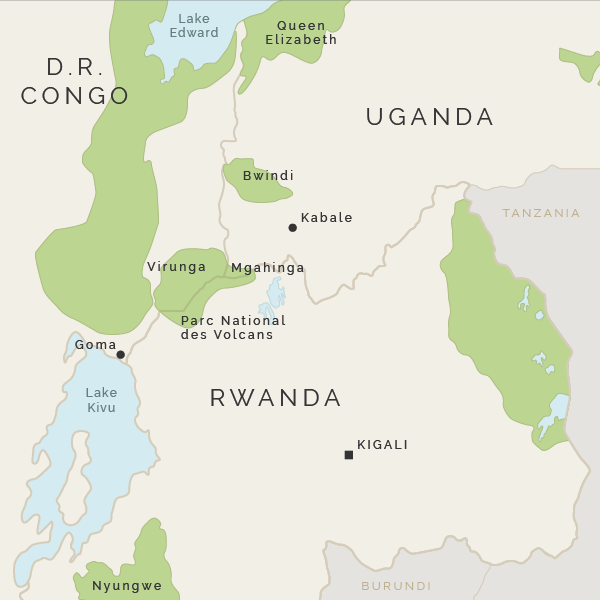Just like Uganda, we class Rwanda as an all-year destination. The climate here is also temperate due to its close proximity to the equator and its high altitude. The temperatures can drop at night during the winter months, however the days generally remain constant in the mid twenties. There are four seasons, a short and long rainy season and a long and short dry season and both have their advantages and disadvantages when it comes to gorilla or chimpanzee trekking.
The Best Time to Visit Rwanda
Rwanda has a long rainy season and a long dry season as well as a short rainy season and a short dry season. The long rainy season lasts from about March until May when the rain is persistent and heavy. This creates tougher conditions if you are trekking for gorillas. The short rainy season is in October and November. The long dry season runs from June until September whilst the short dry season is between December and February.
The Best Time to go Gorilla Trekking in Rwanda
Gorilla trekking can be undertaken all year round, however the wetter months mean that tracking is more difficult and the conditions can be wet and muddy. We recommend trekking between June to September which are the driest months in Rwanda. These drier months are also the perfect time to see the Great Migration in the Serengeti in Tanzania, an easy add on to your trip. If you are also interested in Chimpanzee trekking in Nyubgwe, it is during the rainy seasons (February to June and October to November) when chimp treks are most rewarding because they are easier to locate. In comparison, the dry season makes finding the chimps harder due to food being harder to locate as they venture far into the forest.

